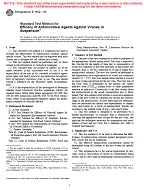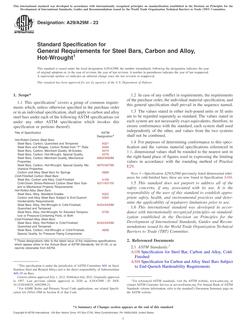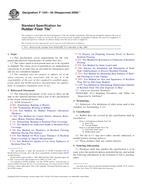1.1 This guide describes a stepwise procedure for using existing information, and if available, supporting field and laboratory data concerning a process, materials, or products potentially linked to adverse effects likely to occur in the environment as a result of an event associated with a process such as the dispersal of a potentially invasive species or the release of material (for example, a chemical) or its derivative products to the environment.
1.2 Hazard analysis-critical control point (HACCP) evaluation is a simple linear process or a network of linear processes that represents the structure of any event; the hazard analysis (HA) depends on the data quality and data quantity available for the evaluation process, especially as that relates to critical control points (CCPs) characterized in completing HACCP. Control measures target CCPs and serve as limiting factors or control steps in a process that reduce or eliminate the hazards that initiated the HACCP evaluation. The main reason for implementing HACCP is to prevent problems associated with a specific process, practice, material, or product.
1.3 This guide assumes that the reader is knowledgeable in specific resource management or engineering practices used as part of the HACCP process. A list of general references is provided for HACCP and implementation of HACCP and similar methods, as those apply to environmental hazard evaluation, natural resource management, and environmental engineering practices
1.4 This guide does not describe or reference detailed procedures for specific applications of HACCP, but describes how existing information or other empirical data should be used when assessing the hazards and identifying CCPs potentially of use in minimizing or eliminating specific hazards. Specific applications of HACCP evaluation are included as annexes to this standard, which include implementation of HACCP in resource management practices related to invasive species control and mitigation.
1.5 HACCP evaluation has a well developed literature in, for example, food science and technology, and in engineering applications (see, for example,
1.6 This standard provides guidance for assessing hazard but does not provide guidance on how to take into account social or political considerations that influence the specification of the acceptability of the hazard. Judgments concerning acceptability are outside the scope of this guide, but available guidance from ASTM is applicable to this process (see E 2348 Standard Guide for Framework for a Consensus-based Environmental Decision-making Process).
1.7 This guide is arranged as follows:
1.8 This standard does not purport to address all of the safety concerns, if any, associated with its use and the implementation of HACCP. It is the responsibility of the user of this standard to establish appropriate safety and health practices and determine the applicability of regulatory limitations prior to use.
Product Details
- Published:
- 03/01/2008
- Number of Pages:
- 18
- File Size:
- 1 file , 140 KB


